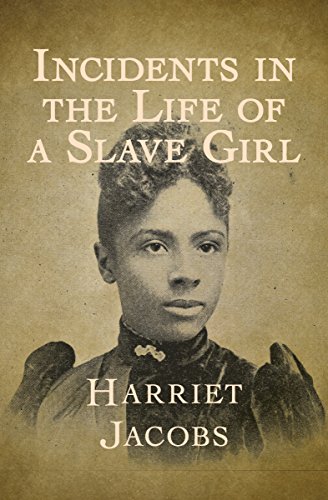For session seven ‘Black people’s experiences in the First World War’, I will be reviewing the work of B.P Willan – ‘The South African Native Labour Contingent, 1916-1918’, in order to gain further perspective and additional knowledge behind why this ‘experiment’ is so relevant to the overall discussion previously mentioned. In this article Willan narrates the experiences held by the black south Africans recruited in the South African Labour Contingent’ (S. A. N. L. C).
It is worth noting that Willan doesn’t make an argument as such, he reflects the events that happened in (S.A.N.L.C) and acts like a narrative of what the Natives endured. He does establish that the S.A.N.L.C turned into an experiment to see if racial segregation could be established in South Africa. Another point he makes apparent is the mistreatment the Natives experienced. His overall ‘main point’ is just that, the unfair treatment in recruitment as well as in the camps, the mistrust and racial abuse masked as ‘rules’ to name a few. Willans overall goal can be recognised as bringing recognition to the horrific incidents that followed the establishment of S.A. N. L. C , as well as breaking down the lies made by the South African government during that time.
In 1916 the government ibn South Africa had received a request from the imperial government for the allowance of what they described as ‘not combatant’ labour for Africans in France. This was approved and the S.A. N. L .C was formed and recruitment commenced despite opposing views from whites on a variety of grounds, including white farmers. It wasn’t only whites who opposed, it was made apparent that a future minister for Native Affairs ‘D.L Smith’ was a danger of going abroad for recruits when discussing those leaving for labour in the mines. Recruitments were gathered through the inticement in slightly higher wages than what was earned by labourers in South Africa as well as referring to being recruited as a display of loyalty to King and country. However, uptake slowed down after a couple of months. The overall association with the South African government was a repellent for many, as well as the fear of what would happen to their families and homes while away was a genuine concern. Many wanted to be around for their children, which they couldn’t do while away at war. Others were also greatly concerned regarding the sinking of the ‘S.S Mendi’ which saw the death of over six-hundred Africans. Regardless, the request for 10,000 men was completed both morally and immorally.
There was always a worry for many regarding the issue of segregation within towns for Natives. The South African Government found it necessary given such fears to implement work in isolated areas such as forests and quarries, in order to prevent what many believed as ‘a danger of contamination’ in Europe, which was thought to have been inevitable. It was then decided that S. A. N .L. C was to be sent out to other places in Europe, this gave the Native Affiars department an opportunity to experiment with controlled segregation, which as to be carefully regulated, so that if proved successful could be implemented back in South Africa. This ultimately allowed what was once considered as a request for labour, turned into a racial ‘experiment’, with the hope to further implement segregation in the Natives country. Requests such as barbed wired fencing, high enough Natives couldn’t escape. Natives were also not allowed to leave their camp unless they had appropriate supervision from a superior. They were not allowed into business establishments without a European escort and prohibited from going anywhere that sold alcohol. In France, it was stated in the ‘appendix’ that Natives were not to be trusted with white women’ and that care was to be made from the public accessing the camp or interacting with Natives ‘to prevent familiarity forming between Europeans and Natives’.
The S. A . N .L. C was not entirely ran as expected due to changes in arrangements. For example, Willan states that the initial two small battalions were split into smaller groups and were placed near the front line instead of dockyards as expected. Although soon they were removed due to political concerns, however, one group did get shelled by the Germans resulting in numerous casualties. A picture of happiness and contentment was portrayed by authorities, which was for many Natives far from the truth. Willan highlights that there is more valuable evidence that Natives were unhappy and dissatisfied of being part of the S. A. N. L. C. He also adds that many Natives had heard stories before reaching their destination which, for those that were on ships that stopped off at Sierra Leone, some were allowed to leave. A further incident of significant importance highlighted by Willan was the growing discontent in the camps in France. In one case the discontent evolved into violence that left thirteen Africans killed by white officers, which the South African government managed to hide.
Willan illustrates why the ‘experiment’ came to an end in 1918 due to various concerns from the South African Government after having asked to increase recruitment to fifty-thousand. Willan is also honest when he admits it is not easy to depict the wider imp0lications of the ‘experiment’ , what can be comprehended is the impact the sinking of the Mendi caused due to the significant loss of lives.
Ultimately, Willan provides an good narrative of the experiences of Natives in the S.A.N.L. C and sheds light on a part of South Africa’s past that is not often explored while setting the record straight. He uses a good range of sources both primary and secondary to back up what his statements, which allows his account to be considered convincing. His writing is particularly in primary sources, including records from the Public Record Office as well as using accounts from Stimela Jason Jingoes from both his autobiography and from transcripts provided.

https://www.sahistory.org.za/image/king-george-v-inspects-south-african-native-labour-corps-1918


